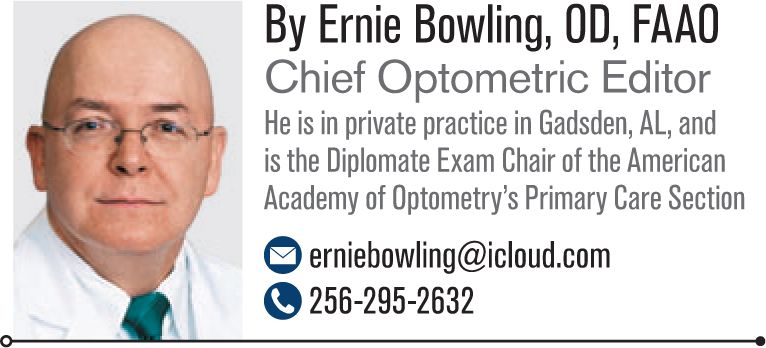- Therapeutic Cataract & Refractive
- Lens Technology
- Glasses
- Ptosis
- Comprehensive Eye Exams
- AMD
- COVID-19
- DME
- Ocular Surface Disease
- Optic Relief
- Geographic Atrophy
- Cornea
- Conjunctivitis
- LASIK
- Myopia
- Presbyopia
- Allergy
- Nutrition
- Pediatrics
- Retina
- Cataract
- Contact Lenses
- Lid and Lash
- Dry Eye
- Glaucoma
- Refractive Surgery
- Comanagement
- Blepharitis
- OCT
- Patient Care
- Diabetic Eye Disease
- Technology
Bausch + Lomb introduces Ultra contact lens
I was fortunate to attend last week’s launch event for Bausch & Lomb’s new silicone hydrogel contact lens, Ultra. This unique entry into the silicone hydrogel line contains a formulation of three silicone molecules combined with a high PVP content and manufactured using MoistureSeal technology, yielding a contact lens with high oxygen transmissibility and low modulus.

I was fortunate to attend last week’s launch event for Bausch + Lomb’s new silicone hydrogel contact lens, Ultra. This unique entry into the silicone hydrogel line contains a formulation of three silicone molecules combined with a high PVP content and manufactured using MoistureSeal technology, yielding a contact lens with high oxygen transmissibility and low modulus.
The result is a monthly replacement lens with excellent ocular comfort that can be appreciated only with the lens on the eye. Dryness and end-of-day comfort has long been the major impediments to contact lens wear-even with the advent of silicone hydrogel lenses, the overall dropout rate has remained steady at about 30%. The lens contains four times the amount of PVP than other silicone hydrogels, which results in increased water retention, and features a smooth and durable lens surface with a thin edge, all of which result in greater comfort.
Bausch + Lomb begins release of Ultra contact lenses
The final payoff, though, is feeling the lens on the eye. Or should I say not feeling the lens on the eye, which was my experience. The doctors in attendance were given the opportunity to evaluate the lens on themselves and their colleagues, yet I wore the lens for several hours following the fitting session. The lens was more than comfortable; I had no awareness of the contact lens on my eye for the several hours I wore it. That was a new experience for me because I’ve always experienced a nagging awareness of a contact lens on my eye no matter the type I was wearing.
The Ultra contact lens will have a parameter range of +2.00 D to -9.00 D initially, expanding to a final range of +6.00 D to -12.00 D, enabling us to provide this option to our presbyopic patients. A main selling point for the businessman in me is that B&L has adopted a unilateral pricing policy for this contact lens. Ultra will be rolled out nationally in May 2014.
